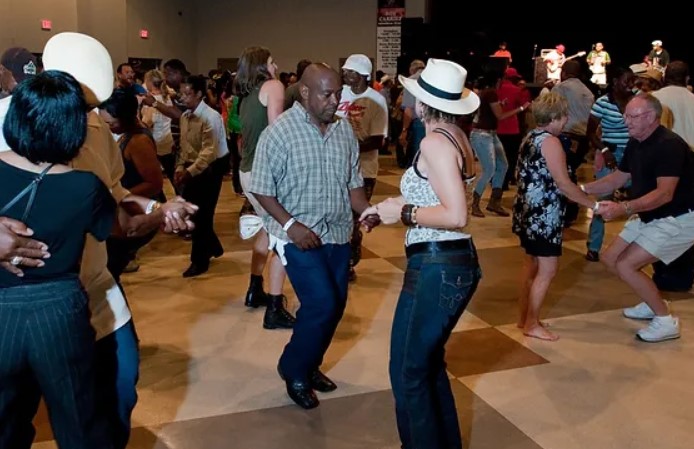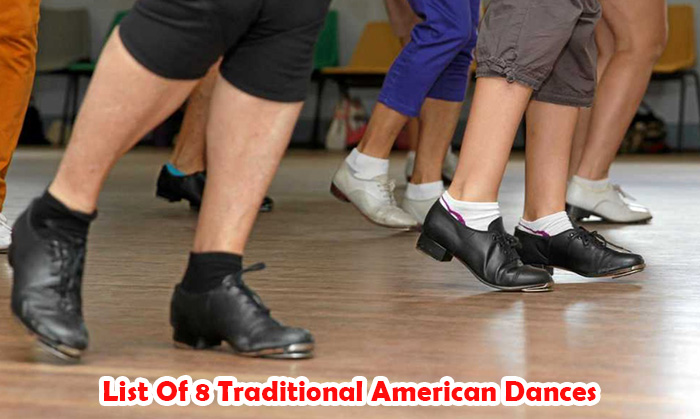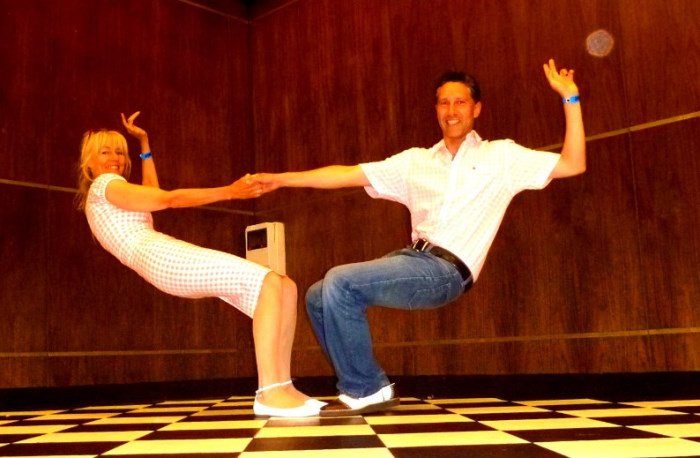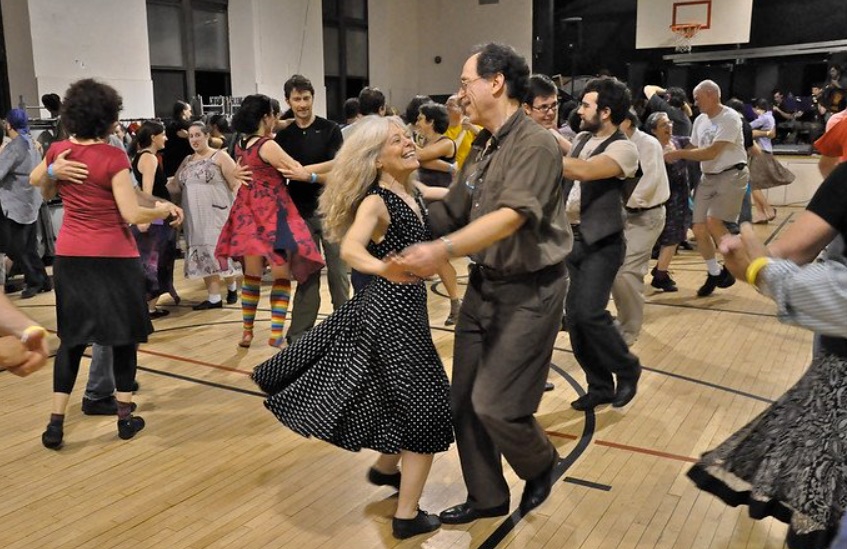The United States of America has a large diversity of cultures, and it shows through the variety of dances they have.
Thanks to dance competitions and TV shows, these traditional American dances have reached a broader audience and even gone beyond the boundaries of the country.
Today, let’s dig a little deeper into the background of them!
Table of Contents
List Of 8 Traditional American Dances
1. Cajun Jig
Cajun is generally used to refer to the dances in Louisiana. Among its various forms, Cajun Jig (also known as Cajun One Step) is one of the simplest variations, hence it is usually associated and combined with a few more styles for better appearances.
The thriving era of Cajun Jig was the 80s and 90s, but it is still a basic step for many dancers. Today, we can find it in more urban settings, especially by Zydeco artists who mix Louisiana and American native music with blues and rhythm.
Instead of a waltz or a blues step, people tend to dance a fast or slow Cajun Jig, no in-betweens. Since it is only one step, they rely on turns and handholding to create more options for the performance.
2. Cajun Jitterbug
Jitterbug is another style of Cajun, usually known as Cajun Two-Step. The foundation built for Cajun Jitterbug also includes the waltz, although it traditionally didn’t have intricate spins and turns.
While Cajun Jig is like a group dance with a big circle, Cajun Jitterbug is for duos. If you hold your partner, you are in a “closed” position; if you hold hands, it is an “open” position.
Newer dancers perform Cajun Jitterbug with exaggerated and energetic moves. It’s crucial to be on the balls of the feet and bend the knees so your dance feels more fluid.
Masterful dancers tend to incorporate Mamou Two-Step, Whiskey River Jitterbug, or Whiskey River Two-Step for a creative touch.
You will have a good chance to see a Cajun dance at most festivals, celebrations, and parties in Louisiana. Fair warning: The rhythm and the uptempo in their music will make it hard for you to sit still!
3. Cakewalk Dance

The Cakewalk dance was one of the most popular dances in America, especially in the ballroom settings of the early 1900s. It was a satire on black slaves toward white people and their sophisticated ballroom traditions.
Many couples will stand in a square formation surrounding the men and march around them to a lively rhythm.
Based on the men’s elegance, the women’s grace, and overall creativity, judges will eliminate the contestant and reward the winner with a beautifully decorated cake.
Scholars consider the Cakewalk dance a valuable contribution to Latin American dances with a jazzy feeling, a good example of mocking your opponents and preserving your culture at the same time.
If you hear someone saying “It is a cakewalk” or “Take the cake”, you will be reminded of the brilliant tactics Black slaves utilized to resist the racism forced upon them.
You’ll love: 7 Popular Traditional Italian Dances
4. Clogging
Clogging (sometimes referred to as Flatfoot dance) is an extremely popular American folk dance.
However, not everyone knows that it originated in Ireland, as workers in northern England came with a recreational activity that people might not expect from them.
While the European clogging dates back to the 1400s, it only first started in America at the Mountain Dance & Folk Festival in 1928 in North Carolina, performed by square dance teams.
Clogging dancers wear special footwear with reinforced toes and heels to strike against the floor or smack their feet together for percussive sounds.
If you feel like it is similar to tap dancing, you are not entirely wrong! Tap dancing indeed comes from clogging.
North Carolina and Kentucky took Clogging as the official dance of the state, so it is quite well-popularized with frequent appearances in dance shows.
5. Contra Dance
Although the Contra dance is from Europe and is not one of the traditional native American dances, it has become a favorite among Americans for many years.
The name was derived from “contradances” in French and people accepted a translation of “country dance” because dance masters from France were taking up country dances from England.
The Contra dance traveled to the United States and became a well-known social dance in the late decades of the 18th century.
The rise of couple dances and new music genres caused the popularity decline of Contra until artists Dudley Laufman and Ted Sannella revitalized it.
When there is a Contra event, anyone can attend, even if they don’t have a partner. They will form couples once the event begins and stand in lines along the dance hall, all according to the lead of the caller.
The live performance of the band with the fiddles and the stringed instruments certainly contributed more to the atmosphere.
6. Square Dance
Traces of the Square dance can be found across the traditions of many countries. Because of the formation, many experts speculate that it might have taken inspiration from the Morris dance with 6 men in a line formation.
For the Square dance, there are 8 dancers divided into 4 couples standing at 4 points of a square and facing the center. The United States stays loyal to the traditional version until this day but also includes a wide variety of movements.
The modern Square dance received promotion and thereby attention in the 1970s. The variations follow the standard pattern, yet the calls and the styles differ from one region to another.
Small organizations and individuals can host a Square dance event as they want to, with or without a dress code. The formation also doesn’t have to be strictly square at all times.
Check more: List of 15 Famous Old School Dance Moves
7. Virginia Reel
As the name indicates, Virginia Reel is a duo dance that is most popular in Virginia.
However, it was brought to the state during the colonial era of the English. Experts believe it might have gone even further back in Scotland during the 17th century.
In America, the Virginia reel spread its influence quite widely, from Polish performances in the ballrooms to the more casual and lively versions we often see today. Either way, the double-line formation remains.
The “reel” feature in this dance is how the first couple in line switches to the end of the set after finishing their parts. When the performance concluded, every couple should have been at the head once.
The Virginia reel is often danced to the sound of violin and calls, and the songs of choice are usually lively but old-fashioned.
8. Zydeco

The Zydeco dance is heavily tied to the corresponding syncopated music, which began to gain more attention as the 20th century approached. It is essentially a dance for couples, sometimes performed on stage or organized to be social.
A Zydeco performance tends to have a leader whose steps will be mimicked, though it is not a strict rule that must be followed at all costs.
Several figures feature completely different steps that the dancers can improvise and express themselves.
The Zydeco music is lively, hence the side steps are not wide and thus the upper body doesn’t sway too much. Hip movements and jumps are not present in this dance either.
If you describe the direction of ballroom dance as “upwards”, you can say Zydeco is the exact opposite.
Conclusion
These traditional American dances never stop being part of life here and now, with the assistance of electrical devices and the internet, they have found a steady foothold instead of losing themselves in the neverending current of history.
Young people learn the dances as a means to be physically active and simultaneously aware of their heritage, and I surely hope they keep up with the spirit!


